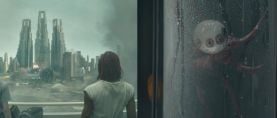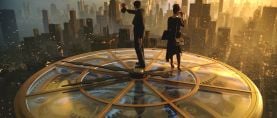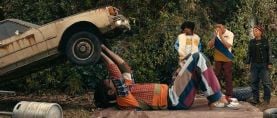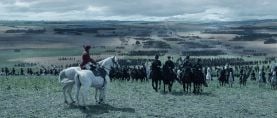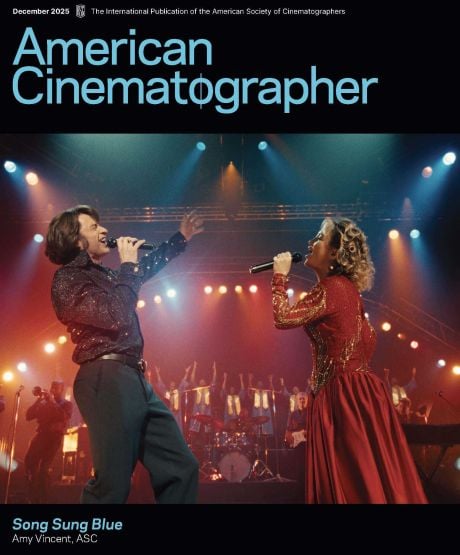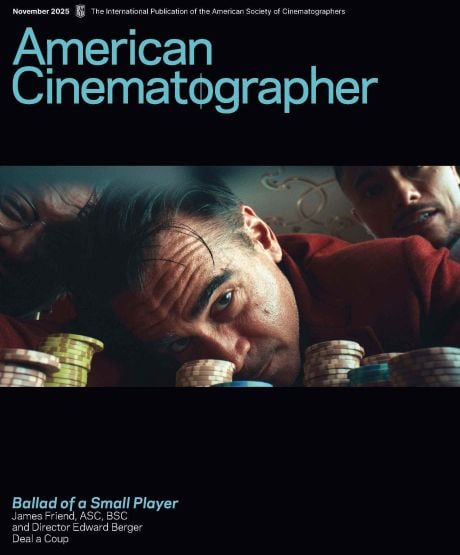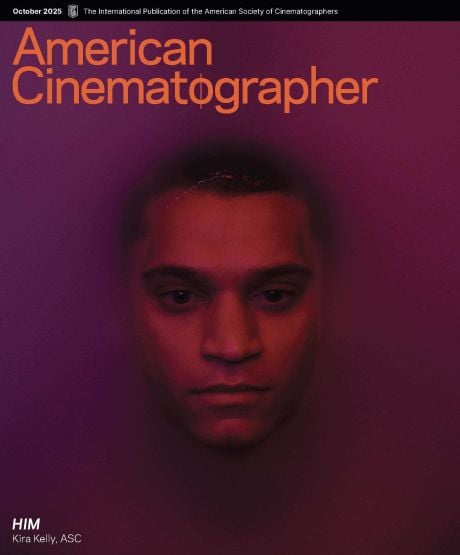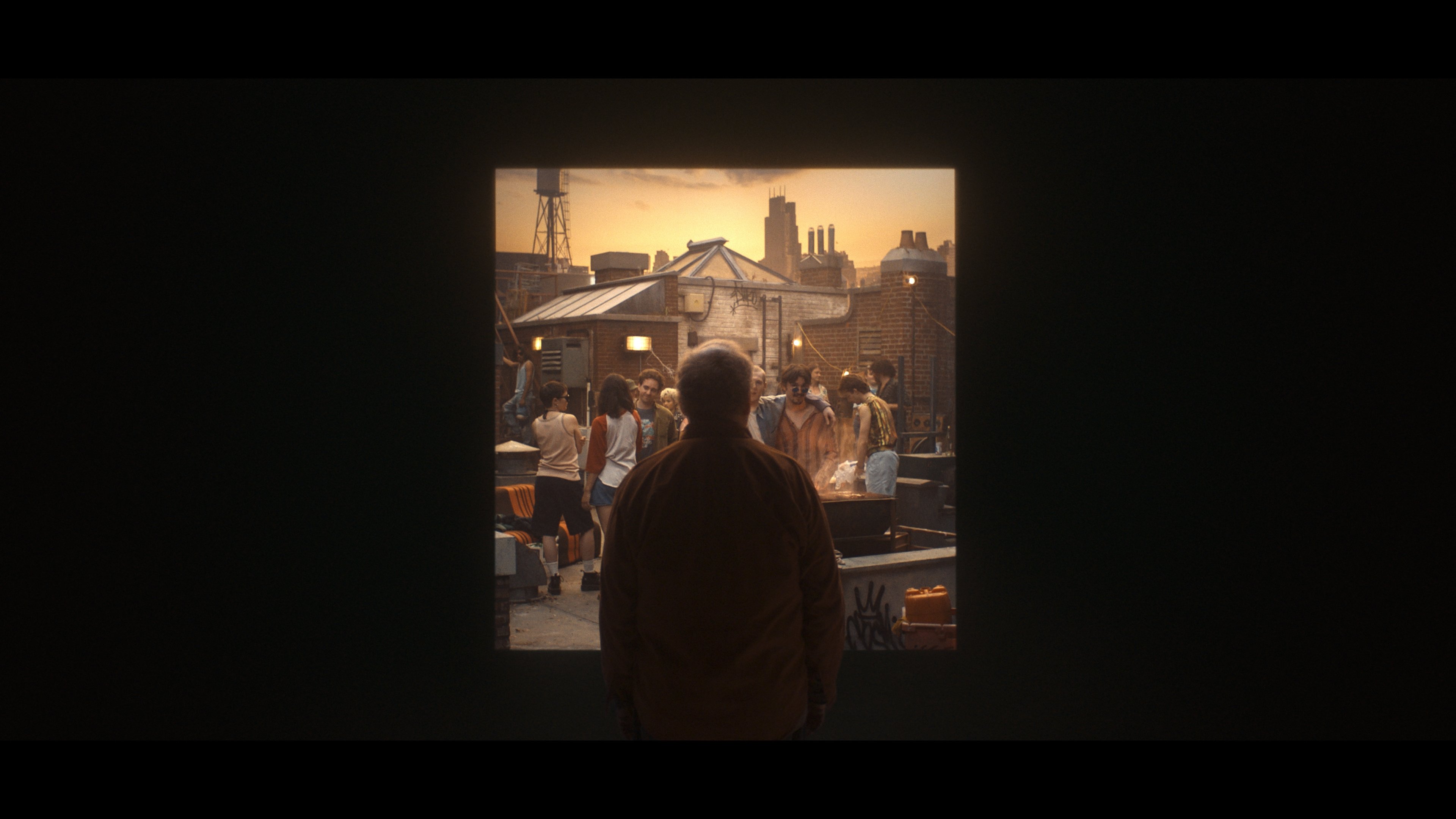
The VFX of Black Mirror's "Eulogy" Bring Photographic Memories to Life
How cinematographer Álvaro Gutiérrez, AEC and the One of Us visual-effects team turned a character's dusty snapshots into three-dimensional worlds for Season 7’s haunting episode.
In the Black Mirror Season 7 episode “Eulogy,” a sad and solitary man named Phil (Paul Giamatti) uses a cranial-input device to relive memories of his recently deceased, long-estranged lover, Carol (Hazel Monaghan). This uncanny experience begins after Phil agrees to contribute to an "immersive memorial" being arranged by Carol's family and curated by a company called Eulogy — and with the help of an A.I. guide (Patsy Ferran), he physically enters the old photographs of his ex he keeps in a shoebox.
Shot by Álvaro Gutiérrez, AEC, and co-directed by Chris Barrett and Luke Taylor, the poignant episode uses an imaginative visual metaphor to articulate themes of emotional detachment and the acceptance of lost love.
"I thought it could be interesting and immersive to replicate the different formats of Phil's old photos," says Gutiérrez. "I showed up to my first meeting with Chris and Luke with a couple of books — Midcentury Memories: The Anonymous Project (2019) and The Polaroid Book (2008). [The photos in those books] had a very nostalgic vibe that I felt had the power to transport us in a similar way that the story does. It was a fountain of inspiration to initiate conversation about the look of each photo memory."
Series visual effects supervisor James MacLachlan contributed to discussions of re-creating photographs as navigable three-dimensional tableaux. The production plotted the first two photo-scenarios — a 1990s rooftop barbecue, and a late-night party — using 3D previsualization at Bigtooth Studios. The episode's lead visual-effects studio, One of Us, then continued development, experimenting with lighting effects and visual anomalies for 10 featured photographs — Polaroids, 35mm point-and-shoot and other period-appropriate formats — imaged via the Eulogy device.
The concept of re-creating memories from half-remembered photos inspired the VFX approach. "At the beginning, the idea was that any part of the image that Eulogy machine couldn't process, because it wasn't seen in a photo, would appear as black," says One of Us visual effects supervisor Victor Tomi. "We went into the shoot thinking that was going to be the final look. It ended up not being that exactly, but that was the first step in our conversations."
The production built soundstage sets at Shepperton Studios in U.K. for rooftop and party photos, and for extended scenes of Phil perusing images in his Cape Cod home. Other sites used locations in London and on the British coast.
To cover the diverse image scenarios, Álvaro Gutiérrez worked with Arri London specialist Simon Surtees to select a variety of lenses. "I wanted to emulate the characteristics of each of photo," said Gutiérrez. "For the present-day timeline, we used the Alexa 35 with a Leica Summilux. For Polaroid effects, we used Alexa 35 with Cooke Speed Panchros. For 'point-and-shoot' scenes, we used the Alexa 35 and Super Baltars. For a 35mm reflex effect, seen in a black-and-white scene and a seaside photo, we used an Alexa Mini LF to match the size of the sensor of a reflex-mirror camera, and Canon K-35s. And for a scene set in a restaurant, which Phil remembers from a magazine, I thought that would have probably been shot with a medium format camera back in the day, so I used the [Arri Rental] Alexa 65 and Tokina Cinema Vista lenses."
Rooftop Reminiscence
Phil and his A.I. Guide enter the rooftop barbecue photo, walking from a black void through a square that approximates a Polaroid format. One of Us plotted the transition from previs. The filmmakers shot Polaroids of mannequins to block partygoer positions, and One of Us created an overlay in the monitor to guide composition. James MacLachlan and Victor Tomi used lasers to delineate boundaries of the Polaroid image, and marked guidelines with tape. The art department painted black areas outside the tape, and the VFX team took lidar scans with and without photo-characters. Steadicam operator Lionel Garotte then followed Giamatti and Ferran into the scene, while performers held positions as characters frozen in time — some with hidden rigging to help support upraised limbs. One of Us later added a digital proscenium.
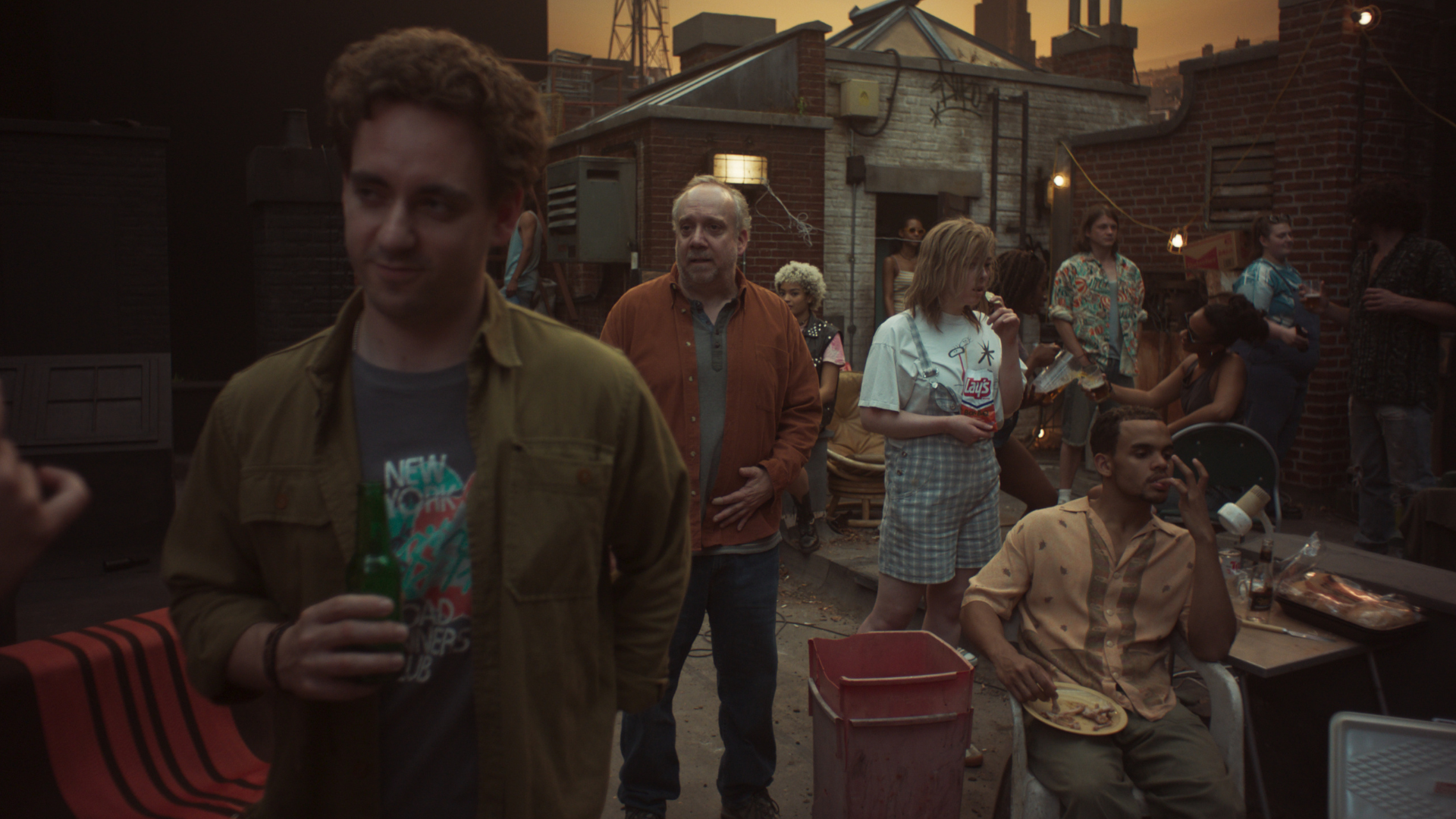


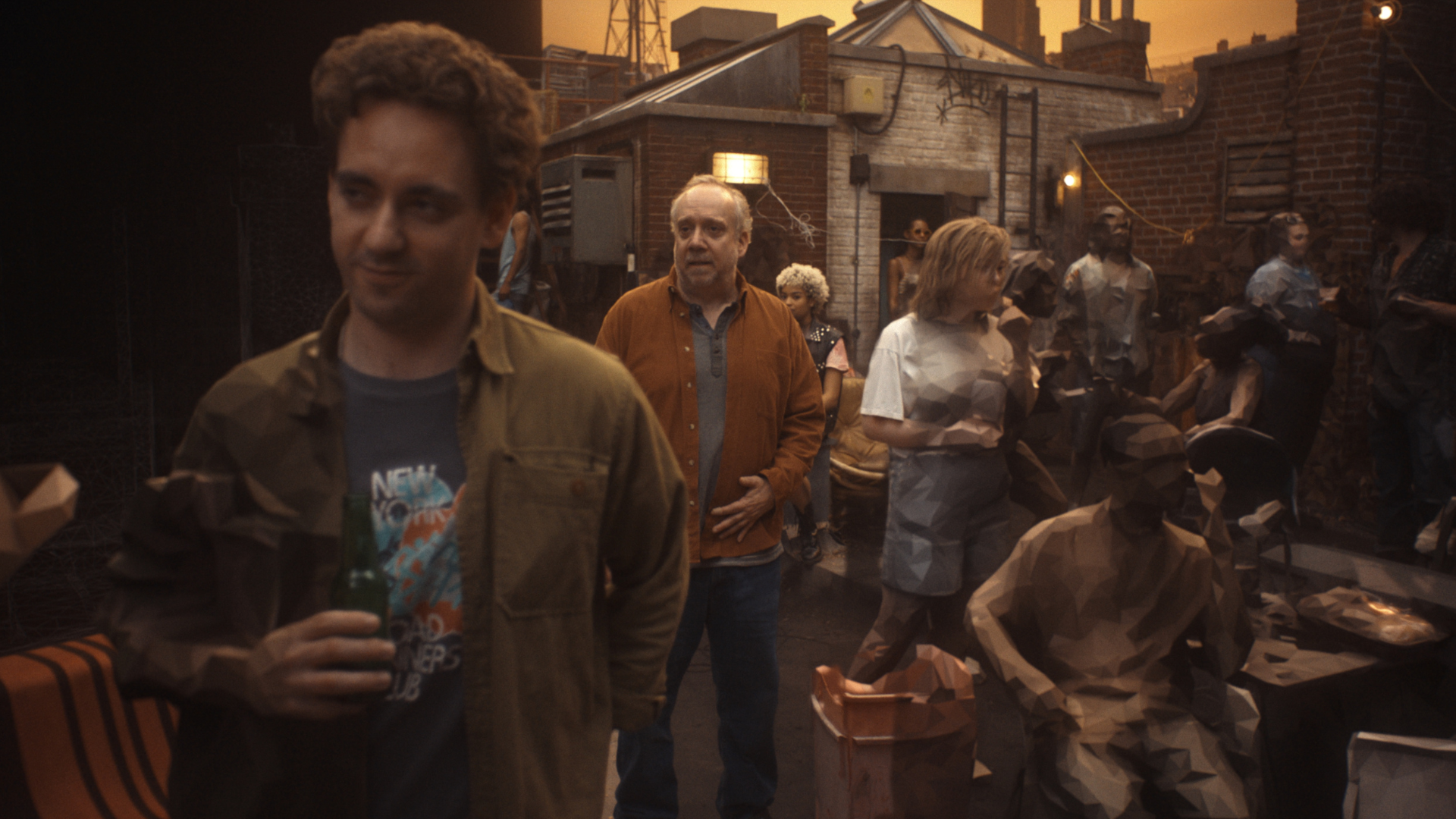
"As the camera moved in to the image, we revealed objects cut off in 3D space, like a sofa only half there," says Tomi. "We also used a take with a single light shining from where the Polaroid camera was shooting. We scanned everything along that camera path, and everything not hit by that light was our guide for what we cut out."
Phil balks when he sees areas not imaged by the Eulogy device, including Carol's off-camera face that resembles Cubist sculpture. One of Us created the look of unformed memories beyond the initial concept of black-on-black negative space, using lidar point-cloud data to create low-polygon-count jagged 3D shapes. To give shapes more form, 3D artists then created a digital model of Phil's unseen love and textured her malformed shape with colors from the photographic plate. "That way, we retained her skin color and the color of her shirt in simple geometry," Tomi notes. VFX then added other CG details, such as barbecue smoke and cigarette plumes hanging in the air, complementing Gutiérrez's smoked-hazed lighting.
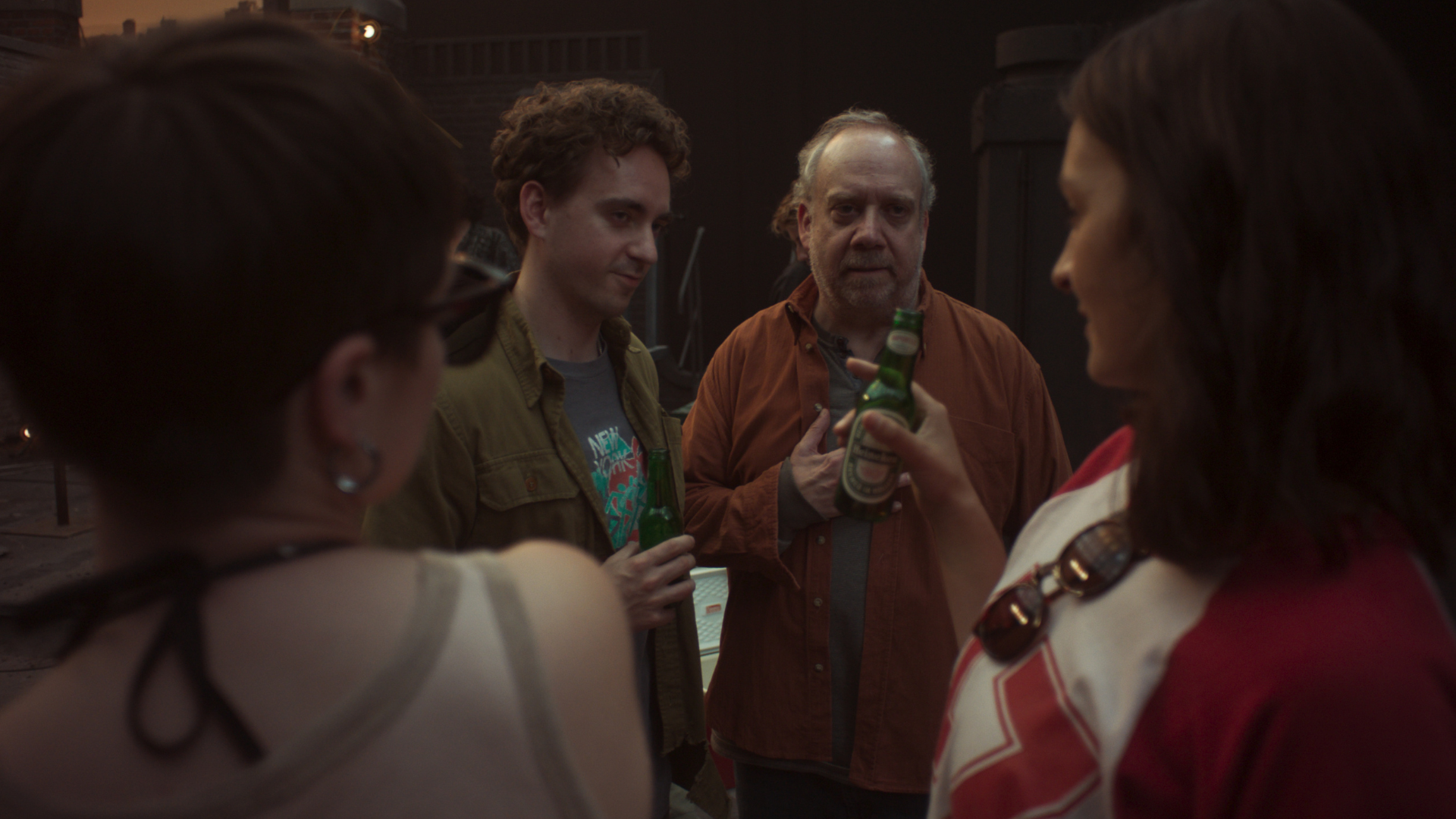
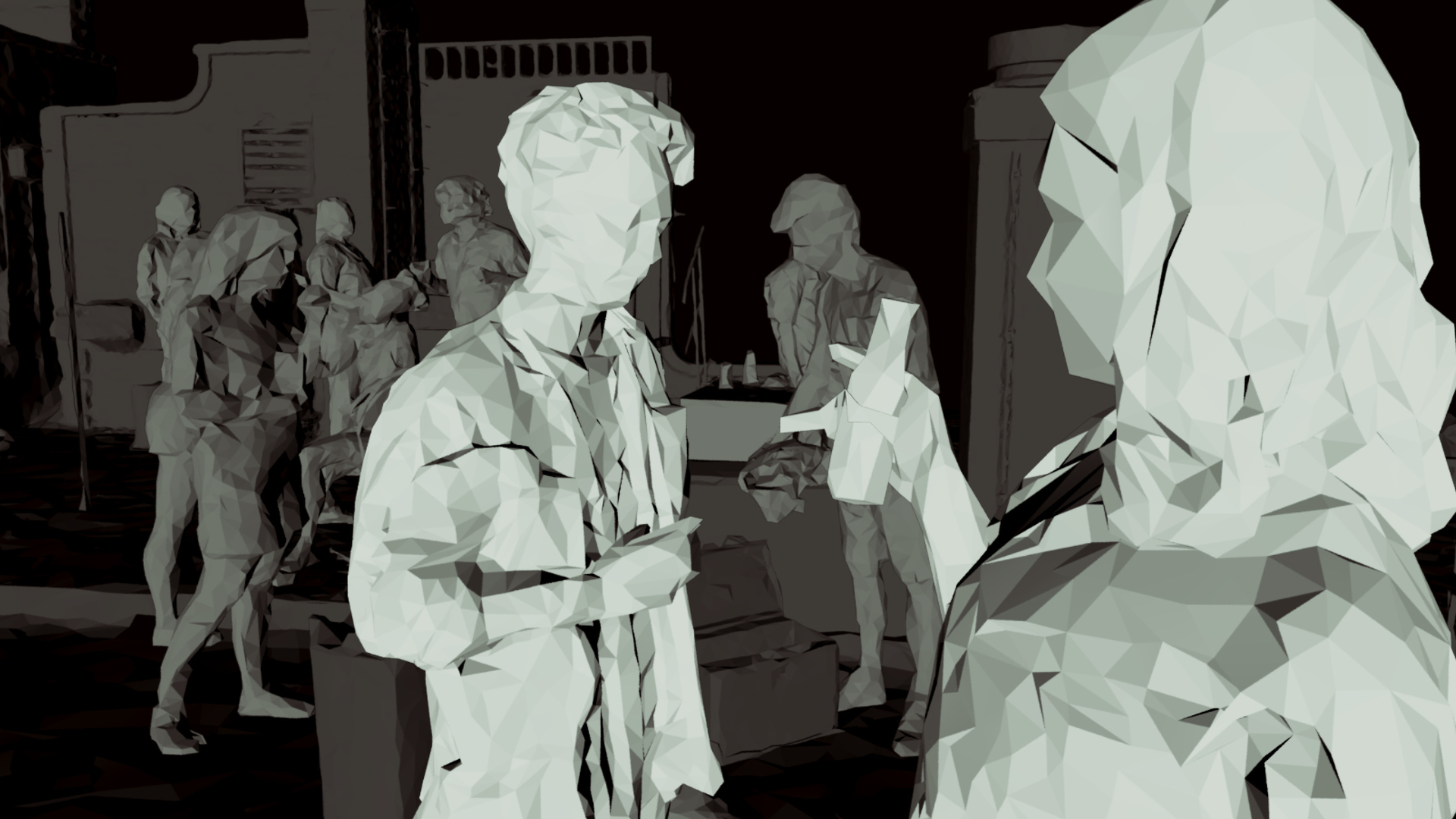
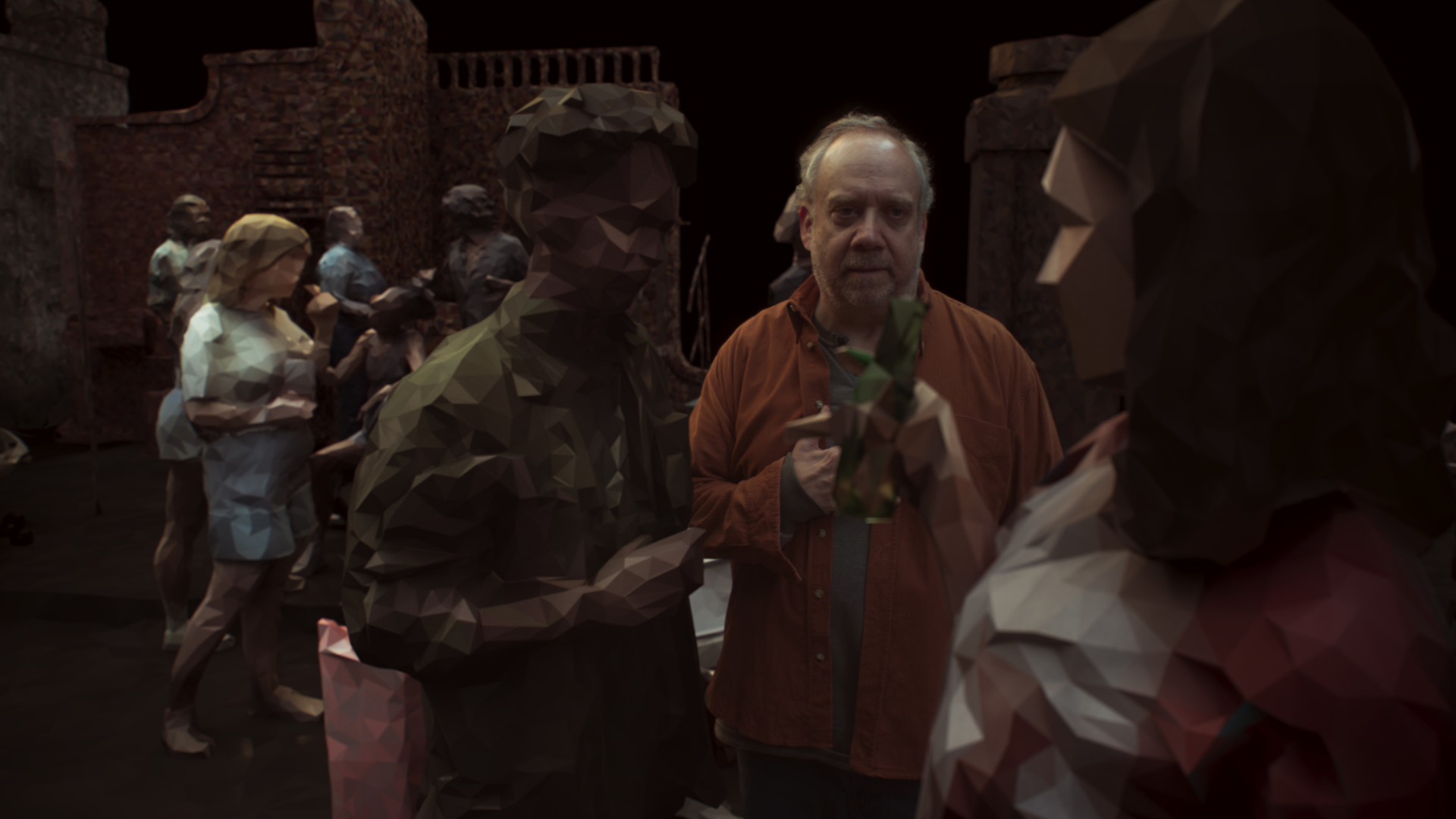

Party in a Polaroid
Phil's second photo of a late-night party is filled with ambient glows, motion-blurred revelers, and a prominent bong-smoking friend illuminated by flash. Gutiérrez represented Phil's Polaroid flash on set using a small box built around a cool white LED source. One of Us enhanced the flash-effect using a digital model of a Polaroid 660 camera buried behind a digital cone of lens flare effects, layered and projected into the scene as a three-dimensional conical volume.
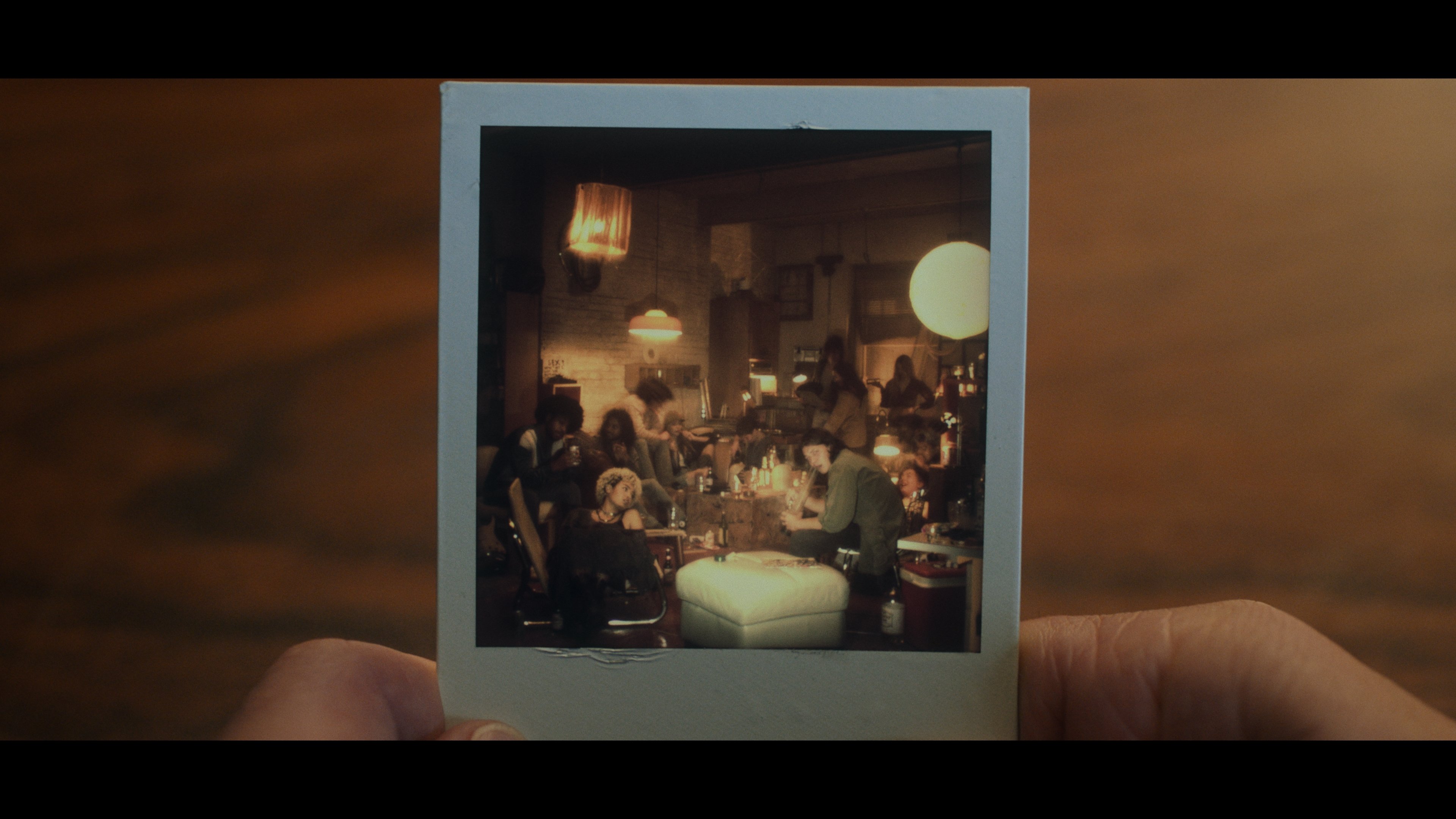
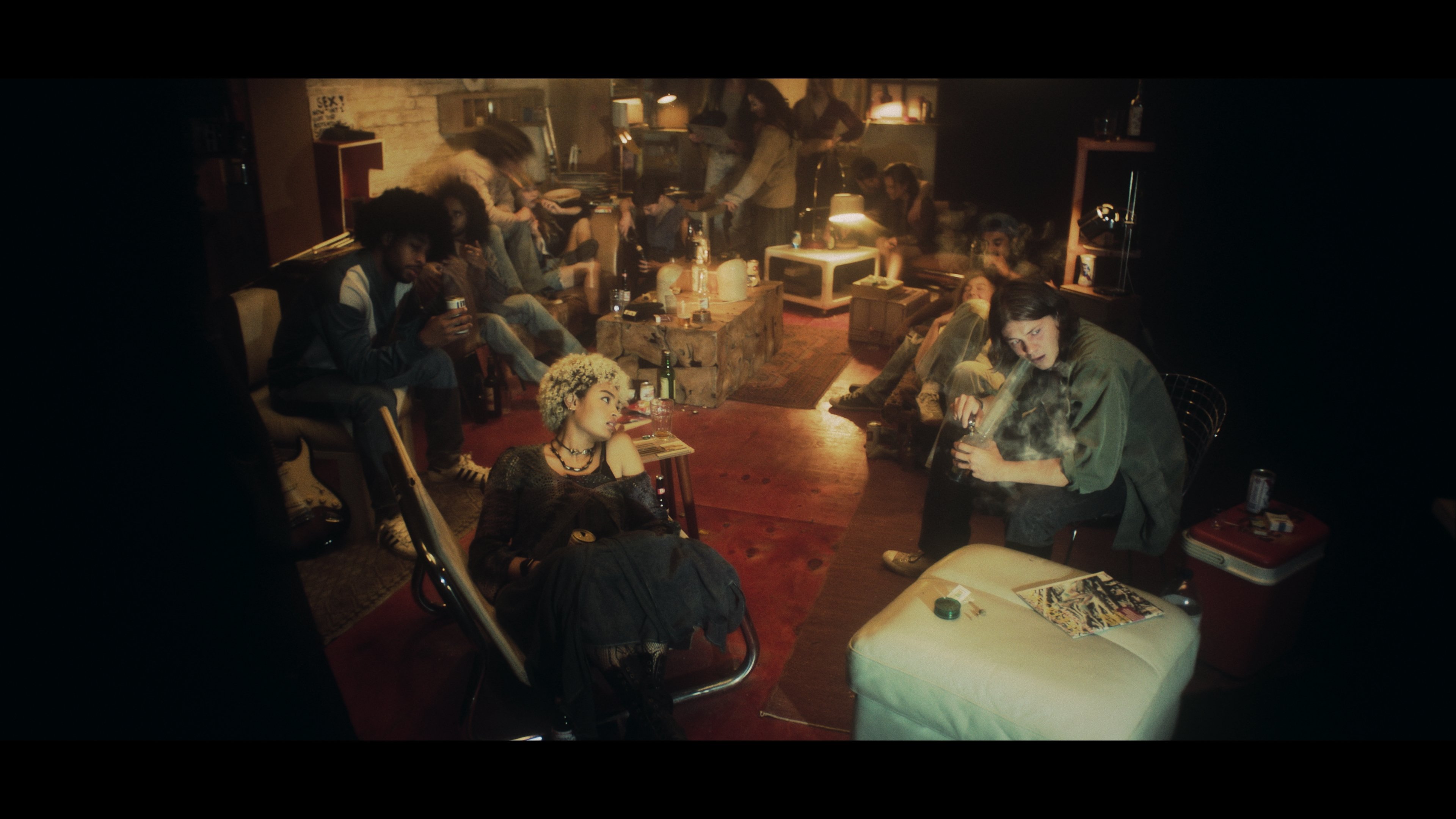
As Phil steps beyond the frozen flash, he spies his younger self (Declan Mason) making out with Carol, lost amid a soup of motion blur. Gutierrez designed lighting to capture the romance of the moment beyond the physical parameters of the Polaroid. "When you take a photo with a flash, whatever is outside that flash is so dark, you wouldn't really be able to see it," Gutiérrez admitted. "It was hard to find a level in which we could still sense the flash, so the camera could travel through the deep end of the picture and see the action. It took a little while to find that equilibrium, believing the photo but making it cinematic, seeing through to the furthest parts of the scene."
The filmmakers covered background party action with a take shot at three frames per second, while party-goers slightly moved. VFX sampled static performers, and used lidar scans and photographic textures to generate volumetric lighting effects and other visual anomalies, suggesting the Eulogy machine struggling to make sense of data from the Polaroid and Phil's visual cortex. Motion blurs were derived from 3D models, layered in 2D, using Side Effects Houdini and The Foundry Nuke. "We were filtering the image, and then adding up a more complex blur," says Tomi. "We considered the motion of the dancers, affected their faces or bodies, and projected that back on top, so it felt like the blurs were happening in 3D as the camera moved through."
Scratched-Out Head
Phil next visits photos that he mutilated long ago with Sharpie scribbles, cigarette burns and pen-punched holes. The filmmakers staged Phil's defaced photo-memories on locations in a London pub, a music venue and a seaside pier. Backgrounds included subtle evidence of motion that One of Us enhanced in the otherwise frozen scenarios. "The first couple of photos were very strict with their parameters," Gutiérrez explains. "But then, as Phil goes through his photos, they start to 'come alive.' Little by little, we see things moving, such as the lights in the pub and in the gig. Phil is coming to life because, as he's going through his photos, he's living again in those moments."
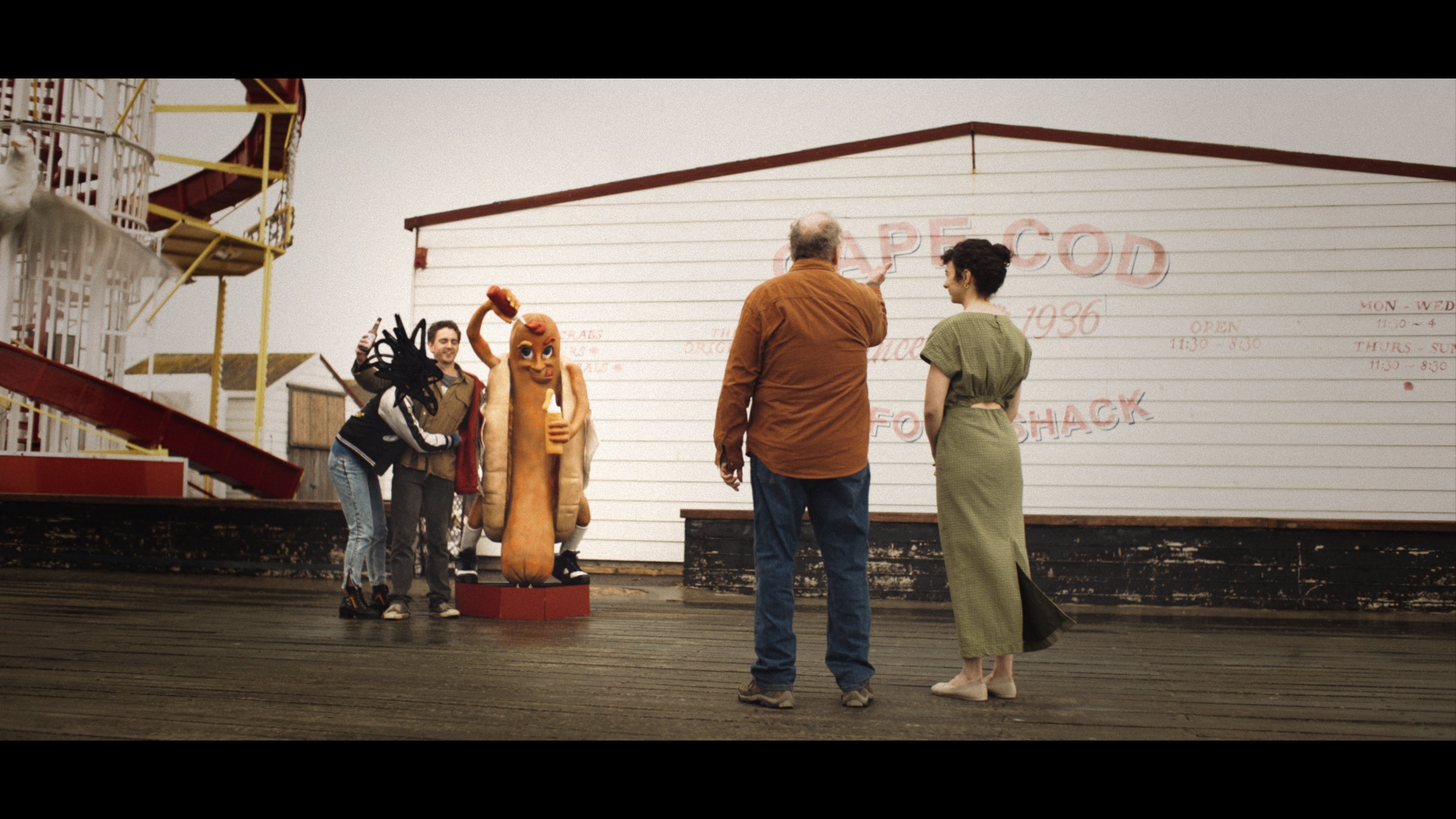

For the music venue scene, One of Us added 3D punch-holes to Carol's face, lit to reflect pulsing, colored stage lights. For Phil's mutilated seaside portrait, One of Us added Sharpie squiggles as 2D digital elements tracked to production plates, obscuring Carol's face. On the pier location, the production supplied a dummy dog and seagull on a stand, which One of Us enhanced by removing rigging and tracking elements, along with another real passing bird, frozen in the bleak tableau.
The Corridor
The episode reaches its epiphany as Phil reviews a snapshot of his younger self in a dimly lit corridor, paused at a doorway, listening to his old flame who is playing her cello out of shot in an adjoining room. The production built the corridor at Shepperton and staged the doorway approach as a Steadicam move, using a subtle sleight-of-hand switch from Declan Mason to Giamatti at Carol's doorway where Phil regards his unseen lover in an enigmatic glow. "I felt that Carol was the light," says Gutiérrez. "Phil is going through darkness of the corridor, which had been his journey until now, and he's looking where she should be, which is light. I used a warm light, as if it was the sun hitting the floor, and that gave a warm bounce on Paul. It worked really nicely for that moment."
One of Us created a digital matte painting that, initially, reveals Phil at Carol's doorway on the brink of a void. Small details not captured by the production camera suggested pictures and personal details on the walls of Carol's apartment, before the room fills in with Phil's emotional memory.
In-depth coverage of four cinematographers' work on Black Mirror Season 7 is featured in American Cinematographer's July 2025 issue, which is reaching subscribers now. Learn more here about how to subscribe to the industry's leading journal of motion-picture production techniques.
Seasons 1-7 of Black Mirror, including its "Eulogy" episode, are available to stream on Netflix. All images courtesy of Netflix and One of Us.
